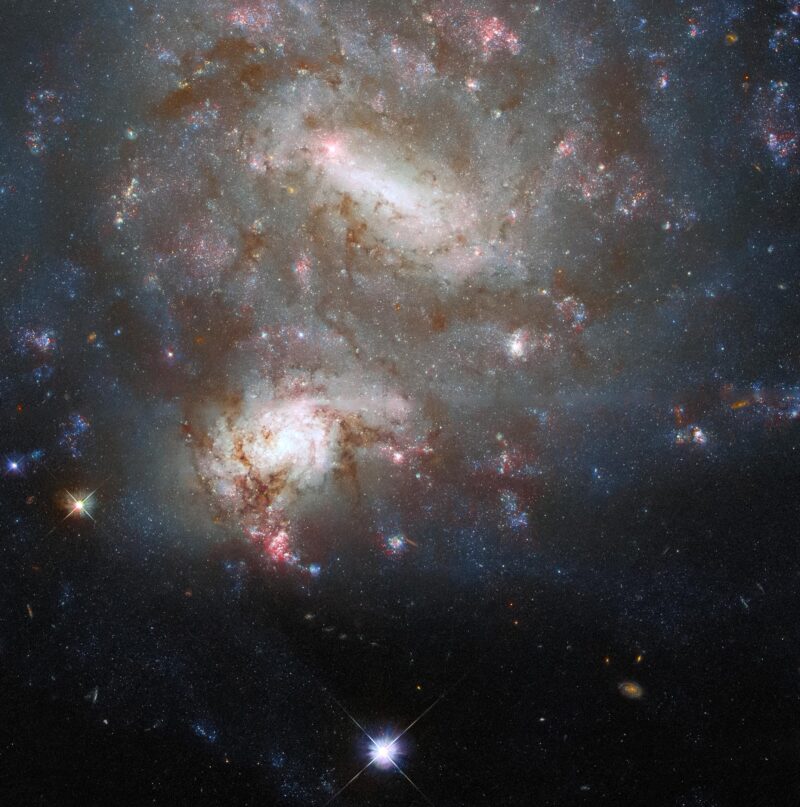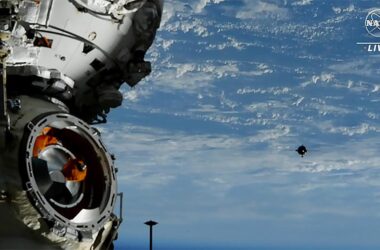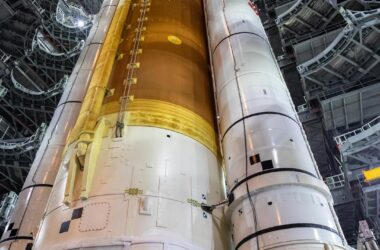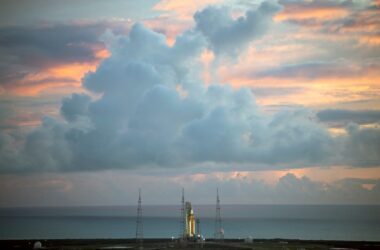
Image du télescope spatial Hubble représentant les galaxies NGC 4496A et NGC 4496B. Crédit : ESA/Hubble & ; NASA, T. Boeker, B. Holwerda, Dark Energy Survey, DOE, FNAL/DECam, CTIO/NOIRLab/NSF/AURA, SDSS, Remerciements : R. Colombari
Les galaxies jumelles NGC 4496A et NGC 4496B dominent le cadre dans cette image du ;” data-gt-translate-attributes=”[{” attribute=””>NASA/ESA Hubble Space Telescope. Both galaxies lie in the constellation Virgo, but despite appearing side-by-side in this image they are at vastly different distances from both Earth and one another. NGC 4496A is 47 million light-years from Earth while NGC 4496B is 212 million light-years away. The enormous distances between the two galaxies mean that the two cannot interact, and they only appear to overlap owing to a chance alignment.
Chance galactic alignments such as this provide astronomers with the opportunity to delve into the distribution of dust in these galaxies. Galactic dust adds to the beauty of astronomical images — it can be seen in this image as the dark tendrils threading through both NGC 4496A and NGC 4496B — but it also complicates astronomers’ observations. Dust absorbs starlight, making stars seem dimmer and shifting their light towards longer wavelengths, a process that astronomers refer to as “reddening” (not the same thing as redshift). By carefully measuring how starlight from background galaxies is affected by dust in intervening galaxies, astronomers can map out where the dust is in the foreground galaxy’s spiral arms. The resulting “dust maps” help astronomers calibrate measurements of everything from cosmological distances to the types of stars populating galaxies.



